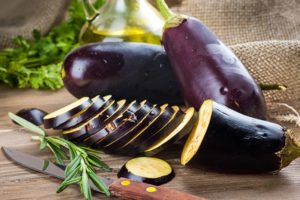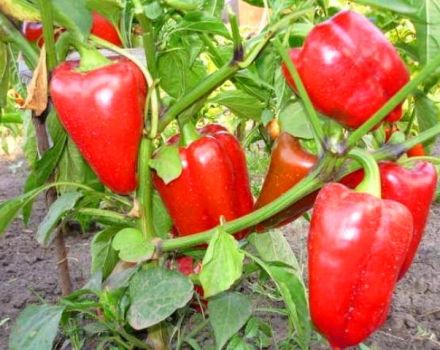Description of the Matrosik eggplant variety, its characteristics and productivity
Among all the blue varieties, the most popular is the striped eggplant Matrosik. Many gardeners have already appreciated this variety due to its high agrotechnical qualities, breeders choose it for its non-standard fruit color, and housewives grow it for its excellent taste.
Description and characteristics of the variety
Unusual Matrosik eggplant is a variety with average maturity, high yield, excellent taste.
It is chosen for the following unique features:
- Due to its high agrotechnical characteristics, it is cultivated in greenhouses and open ground.
- It perfectly withstands transportation, keeping its original appearance.
- It has a delicate flesh, no bitter taste, and is used in many winter storage formulations.
- It has a certain resistance to many diseases, it is not susceptible to verticillary wilt.

The selected variety has the following agrotechnical characteristics:
- fruiting begins at 100-105 days;
- plant stems are strong enough, developed;
- his bushes are spreading, they can develop up to 80 centimeters;
- yield indicators of this variety are 8-10 kilograms per 1 square meter;
- the shape of ripe fruits is oval or pear-shaped, the surface is glossy, the color of the vegetable is stripes of a dark purple tone, alternating with white;
- the flesh of a vegetable of medium density, without voids, white, without visible bitterness.
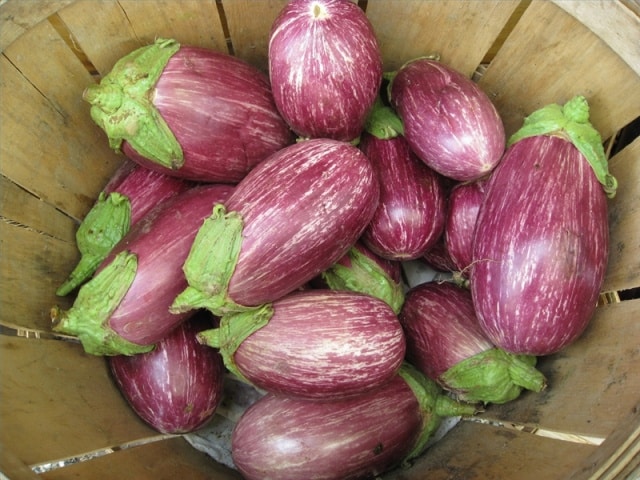
What are the disadvantages of the variety?
This is an excellent variety, it has a lot of advantages, but as shortcomings, gardeners note that there are thorns on the stem and pericarp of Matrosik, so the harvest is carried out exclusively with gloves.
Growing features
A feature of almost all eggplants is that they feel comfortable and bear fruit well in warm and humid conditions. Every gardener knows the following nuances of growing aromatic zucchini Matrosikov:
- Heat-loving annuals love warmth much more than their counterparts - aromatic tomatoes and unpretentious peppers. A comfortable temperature for accelerating seedlings is 20-25 degrees, and for comfortable growth and development - 25-30 degrees. At the same time, remember that a sharp failure of temperature regimes, a decrease in temperature is detrimental to healthy eggplants.
- Yield indicators depend on the quality of watering, with a lack of life-giving moisture, beautiful flowers and the first ovaries slowly fade. Excess moisture provokes the development of destructive diseases.
- Eggplants grow and develop comfortably on nutritious black soil or light loamy composition. Annuals prefer feeding with organic matter or light nitrogen fertilizers.

Growing seedlings
The eggplant variety is cultivated in seedlings; in regions with a warm climate, it is allowed to grow vegetables by sowing in open ground. The optimal precursors for the demanding eggplant are carrots, melons, and legumes.
Selected eggplant seeds are sown in special pots or a ready-made nursery. High-quality soil is poured there, purchased in a store or made independently.
High-quality nitrogen, phosphorus and potassium fertilizers are also added to the prepared mixture.

The following procedures will help to increase germination rates:
- preliminary soaking of the selected seeds in a growth stimulator for 3 hours, or simply soaking in purified water until germination;
- in a prepared pot, make 4 holes with a depth of 2 centimeters, put one selected seed there, sprinkle with earth, water abundantly;
- the optimal time for sowing seedlings is the end of February or the beginning of March. After sprouting, one strong specimen is left in a pot.
For 25 days before direct planting in open ground, the resulting seedlings are hardened, bringing the cultivation conditions closer to the most natural environment.
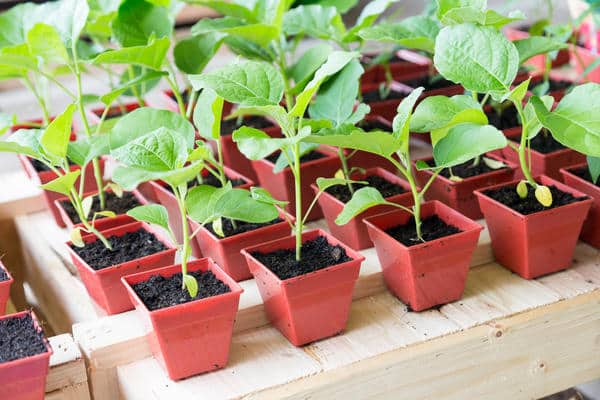
Sprout care
Caring for growing vegetables is quite simple, any novice gardener can handle it. It includes a number of the following activities:
- thorough weeding of annoying weeds;
- high-quality watering and soil loosening;
- periodic feeding;
- shaping the bush.
All of these steps will help you grow strong, healthy striped eggplants.

Landing in open ground
The hardened sprouts are planted in open ground after May 20, when return frosts are no longer observed, warm weather becomes stable. During disembarkation, the scheme is observed: 40 centimeters is the distance between the bushes, there should be a gap of 50 centimeters between the rows.
During planting, life-giving organic matter and high-quality mineral fertilizer are applied under each bush.
How to care for an eggplant
It is not easy for young sprouts to take root in a new place, so they need to be provided with proper care. Blue eggplant they feel comfortable at a temperature of 23-26 degrees, so the main task of the gardener is to prevent hypothermia or overheating. In order to protect against external destructive factors, a special film is used. Upon reaching the shoot at a height of 30 centimeters, the top is pinched. Of the lateral shoots, only 5 strong ones are left, the rest are simply disposed of.
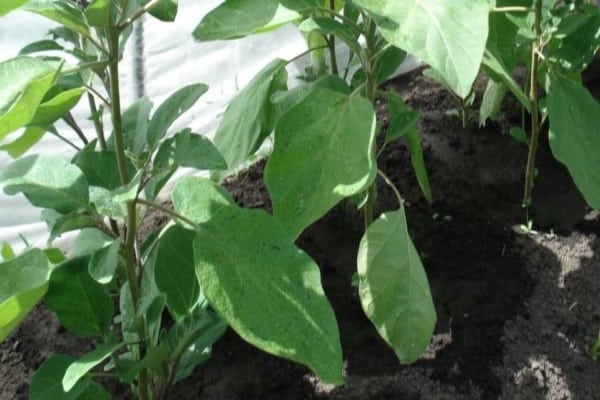
Weeding
Weeding the ridges from excess weeds is carried out regularly, because eggplants do not like it when something interferes with their development. In addition, weeds attract pests and provoke the development of destructive diseases. That is why weeding is needed. Do this procedure regularly, as needed.
Watering and loosening
High-quality watering is carried out with heated water 2 times a week before flowering. The main reference point is the current degree of soil moisture. During flowering and fruit formation, the annual is irrigated directly under the root. In severe drought, light shading is performed so that fragile shoots do not receive a severe burn.
Also, do not forget about periodic loosening of the soil, in order to avoid clumping, in order to ensure free access of oxygen to the roots of the plant.
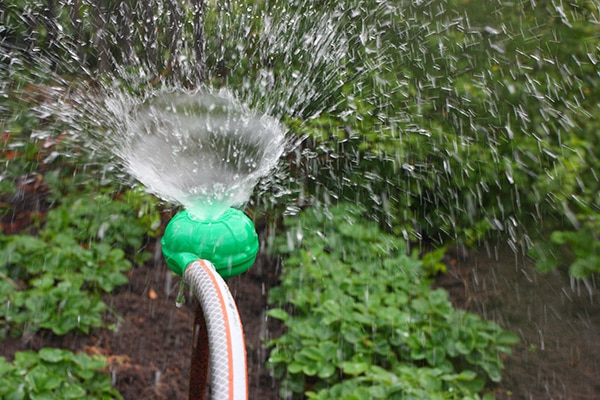
Top dressing
During the planting of young shoots, high-quality humus, wood ash, nitrophosphate are introduced into the open soil under each hole.During the formation of the ovary, the established plants also need support, then they are given a complex of minerals, for example, Agricola, beloved by all annuals. During the period of active fruiting, they make another feed for plants in the form of high-quality minerals and natural organic matter.
Bush formation
The formation of a bush consists in pinching the top of the bush; after it stretches up to 30 centimeters, as well as in pinching and removing excess branches.
Diseases and pests
When cultivating a perennial, it is necessary to take into account the fact that an annual literally attracts dangerous pests. The first enemy of the blue ones is the Colorado potato beetle. Having settled in for the escape, in a matter of days he gnaws at it to the end. Spraying with chemicals, infusion of useful wormwood will help to cope with it.
Spider mites and bugs can damage the crop. For preventive purposes, the plant is sprayed with an infusion of onions or ordinary dandelion.

How and when to harvest
When determining the maturity of the eggplant fruit, the allowable growing season of the selected variety is taken into account. The timing of ripening is directly influenced by: used agricultural technology, weather conditions, careful adherence to the specified planting dates. Eggplant has no visible signs of maturity, the main emphasis here is on the length of the fruit.
The usual pressing on the fruit will help to clarify the maturity - if the skin bends slightly, quickly taking its original shape, then the fruit can be plucked.
Further storage
With the right approach, the shelf life is extended. For this, large, healthy specimens are selected, which do not show signs of damage. Selected samples are placed in wooden boxes, shifting with straw. Healthy vegetables keep great in a cool, dark place.

